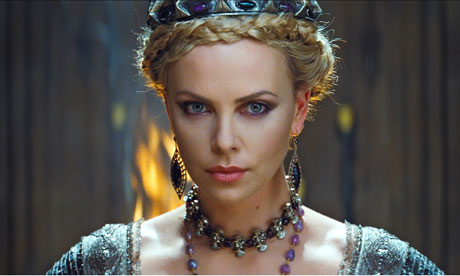“The Invisible War” has forever changed my perception about the American military. It will stay that way for me and the people profiled in this film until action is taken. Kirby Dick’s documentary is a horrifying exposé about sexual assault and rape in the armed services. The countless veterans here speaking out about their rape considered themselves valuable individuals in an army of one. Now even that privilege has been taken away with this repulsive act. These people speak of the soldiers they once called brothers as the “they” who turned them into victims.
According to U.S. Government Studies cited by “The Invisible War,” nearly 20 percent of all the women who have served in the American military have reported being sexually assaulted while in the line of duty. As is true of most rape cases, many more go unreported. But “The Invisible War” analyzes the systemic problems in the military legal system in addressing this issue, including why so few victims openly report abuse, why little to no action is taken and why this continues to happen.
Dick finds several dozen women, many of whom appear on camera for only a moment, who were raped while serving. They belong to the Army, Navy, Air Force, Marines and Coast Guard. Each had their own reason for enlisting, and each now has their own personal trauma, but Dick’s gift is in finding how their stories are strikingly similar.
They remember their heads hitting the wall, a friend or officer suddenly being on top of them, a gun being held to their head and finding out they were pregnant later. Some of them remember this happening numerous times.
These are strong women who have been through the same training as their attackers, although now Kori Cioca, whom the film follows most closely, carries both a cross and a Smith & Wesson knife. Jesus can only provide so much protection, she says.
As a result of being attacked, Kori is suffering from severe pain in her jaw, restricting her to a diet of soft foods. For months she has been calling the VA office to receive medical coverage, but she remains at the end of a long waiting list. The movie uses jump cuts of her listening to call-waiting music on speakerphone, emphasizing her perpetual wait. When she finally goes into the office, on Veteran’s Day no less, the doctors order X-Rays for her back and nothing for her jaw. We see Kori’s mind-boggling struggle and rigorous patience and think of the many other veterans also being denied medical coverage. How can we treat our own so poorly?
But Kori is not alone, nor are the rape numbers merely statistics. It is now abundantly clear to me that rape does not just affect your body. It impacts health, society, romance, careers and lives. Dick’s film finds a terrific balance between facts and drama. Take for instance that 40 percent of female veterans who are now homeless were once rape victims, women so haunted in their PTSD that they could not bring themselves back to society to find jobs. If the numbers are unconvincing, ask Kori what it’s like to be too scared show your husband affection or what it’s like to read your own suicide note aloud.
How could these numbers be so shocking? How could this system be so broken? How is it that every general and commanding officer can claim the military has a Zero Tolerance policy? How is it that even our best and brightest Marines are neither safe nor innocent?
The hard truth is that for all intensive purposes, these soldiers are not citizens when it comes to receiving justice and legal rights. In the army, punishment and justice is administered in a closed system, delivered solely by the commanding officer. In 15 percent of the cases, the CO himself is the rapist. In the others, witnesses and suspects can simply keep silent, and the person who has reported the rape is suddenly at risk of their own court martial, threatening their rank and placement.
It’s a boys’ club that celebrates strength and nobility, and some of these investigations that aim to sweep the rape cases under the rug are enraging. One woman named Elle was raped after her fellow soldiers forced her to drink. Her case was closed due to a lack of evidence, and she was later investigated for public intoxication. Another named Ariana was told she was welcoming an assault by wearing the regulation Marine skirt. A third woman, she an active duty Marine who remained anonymous, was raped by a married officer and was cited with having committed adultery.
You begin to ask, why aren’t there more screening procedures for enrolling? Why is the percentage of rapists in the military double that of sex offenders in America? Why do preventative campaigns focus on women, not on finding the guilty? “The Invisible War” makes it seem as if these questions and problems will never end, but it calls attention to them with urgency and poignancy. It addresses flimsy counter arguments with hard-hitting numbers and a wealth of moving testimony. It even extends the need for action into the real world through a convincing portrait of rapists as predators who will act again and again, even once they enter back into our communities.
At the end of the film, Kori visits a veteran’s memorial for women and sees a display of a Purple Heart medal. Maybe she deserves a medal too, she wonders. To her this was an ordeal equivalent to going into combat, and this was her own story of survival. Is this the sacrifice she was supposed to make for her country?
4 stars

